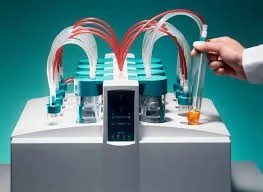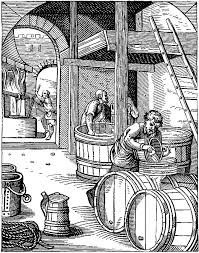Origin and History of Biotechnology and Environmental Biotechnology
Biotechnology has a long history that predated modern civilization, humans for a very long time have put plants and animals to several uses without actually calling it biotechnology.
Fermentation and brewing have been carried out long before the turn of the first millennium and microbes were used to cure diseases.
In this article, you will learn all about when humans started using plants and animals to solve these specific problems and the problems that have been solved using the different plants and animals.
You will also learn about when the application of living organisms to solve human problems came to be called biotechnology and how the process of biotechnology progressed from simple traditional use of whole organisms to very complex techniques involving isolation and use of parts of organisms, including the smallest component of an organism known as the genes.
Origin and History of Biotechnology and Environmental Biotechnology
The word “biotechnology” was first coined by a Hungarian known as Karl Ereky in 1919 to describe a technology based on the use of living organisms either in whole or in part to convert raw materials into more useful product(s).
In real sense, however, the history of biotechnology and environmental biotechnology can be divided into three major developmental periods, namely: ancient, classical and modern history.
The ancient history dated hundreds of centuries ago suggesting that humans have used organisms for development almost throughout human history. During that period, techniques that today formed the background of biotechnology were developed although the word “biotechnology” was not used to describe any of the techniques.
Such technologies included fermentation, which was developed in the ancient Egypt more than 6000 years ago.

Fermentation is the use of microorganisms usually bacteria or yeast to breakdown organic compounds, e.g. sugars into simpler substances e.g. carbon dioxide and alcohol.
The new fermentation technology was first used to make wine and later dough rise about 4000 years ago giving birth to the world’s first bread. It also gave rise to the making of many other food products such as cheese and dairy products.
This period ended about 500 – 100 BC when the Chinese developed what were to become the world’s first antibiotics and insecticide using moldy curds (solid part of sour milk) and powdered chrysanthemum (a perennial garden plant), respectively. During this period, only whole-organisms were used.
The classical history occurred between the 16th and 19th century AD involving the invention, discovery and development of technologies, materials and methods, that will later give rise to the use of animal parts and substances in biotechnology.
The first of such materials was the microscope invented by Zaccharias Jenssen in 1590. This led to the discovery of the cell in 1665 by an Englishman, Robert Hooke and one- celled microorganisms, bacteria and protozoa between 1675 and 1683 by Antone Van Leeuwenhoek, a tradesman of Delft, Holland.
Cell theory was however not developed until 1839 when Theodor Schwann, Matthias Jakob and Rudoff Virchow propounded that the cell is the building block of all living things.
In 1796, Edward Jenner, an English physician and scientist from Berkeley, Gloucestershire, developed the first successful vaccine against smallpox. This was the beginning of biotechnology application to medicine.
In 1802, the term “biology” in its modern sense was propounded independently by a German naturalist, Gottfried Reinhold Treviranus (Biologie oder Philosophie der lebenden Natur) and a French soldier and naturalist, Jean-Baptiste de Lamarck (Hydrogéologie) although the word was coined in 1800 by another German physiologist, Karl Friedrich Burdach.
The development of biology as a science of study led to series of quick discoveries that culminated in the coining of the word biotechnology in 1919.
First was the discovery of proteins (the building block of living organisms) in 1838 by Gerhard Johan Mulder, a Dutch chemist although the word was first used by a Swedish scientist Jöns Jacob Berzelius in 1816.
This was followed by the discovery of cell nucleus in 1933 by a Scottish Botanist Robert Brown, although the nucleus had earlier been observed by Thonius Philips van Leeuwenhoek.
The two important isolations of Escherichia coli and yeast in 1855 by Theodor Escherich (a German) and Louis Pasteur (a French), respectively confirmed that individual microorganisms were involved with food poisoning and food decay.
Gregor Johann Mendel, an Austrian scientist discovered the gene in 1862 and laid the foundation of not only genetics but also genetic engineering, which as we will see in later chapters play great roles in modern biotechnology.
The later independent discoveries of the chromatin (1879) and chromosome (1888) by two German scientists Walther Flemming and Heinrich Wilhelm Gottfried von Waldeyer- Hartz, respectively ended the middle age period in the history of biotechnology.
The modern biotechnology started with the coining of the word “biotechnology” in 1919 by Karl Ereky of Hungary in his book Biotechnologie der Fleisch-, Fett- und Milcherzeugung im land- wirtschaftlichen Grossbetriebe (Biotechnology of Meat, Fat and Milk Production in an Agricultural Large-Scale Farm), published in Berlin.
The new technology spread within a short time to various parts of the world including Great Britain and the United States of America. It encouraged further research on the discovery of microorganisms and their application to new areas in biologically-based industries to create new fermentation products.
The research intensification led to the discovery in 1927 by Muller that x-rays cause mutation (a random change in a gene or chromosome resulting in a new trait or characteristic that can be inherited; which could be a source of beneficial, neutral or harmful genetic effect) in organisms.
This was a landmark discovery, showing for the first time that changes in the internal (genetic) composition of an organism gives rise to new phenotype (visible characteristics).
Further research along this line led to the discovery of penicillin, in 1928 by the Scottish scientist Alexander Fleming and coining of the term “molecular biology” in 1938 by Warren Weaver, an American mathematician.
The knowledge of molecular biology (the study of the molecular basis of biology), enhanced the understanding of the interaction between the various systems of a cell, including the interactions between deoxyribonucleic acid (DNA), ribonucleic acid (RNA) and protein biosynthesis quickly gave rise to genetic engineering in 1941.
A process of altering the genetic material (DNA and RNA) and other components of the living cells to make them capable of producing new substances and/or performing new functions, genetic engineering involves the understanding of the composition, sequence and functions of genes and their constituents in an organism and the consequence of alteration of all or any of these.
The applications of this technology (i.e. alteration of the composition and sequence) of genes to achieve specific functions have giving rise to several emerging issues in modern biotechnology.
In summary, the history of biotechnology could be divided into three major period of ancient, classical and modern history. Ancient history started more than 6000 BC when man first used fermentation to process some of its food materials.
During this period, no one knew that technology involved the use of other living organisms in processing foods. This knowledge came in the Middle Ages during the classical history, which started in the 14th century AD.
During this period, equipment such as microscopes was discovered and with it came the existence of living organisms that cannot be seen with the unaided eyes.
Read Also : Perceived Advantages of Biotechnology
The discovery of these microorganisms, the roles they play in food processing especially fermentation and techniques for manipulating them (ability to alter their populations and transfer them from one medium to another) led to several experiments on how to make them work better and faster to produce food in higher quality and quantity.
This gave rise to biotechnology; a term coined in 1919 by a Hungarian agriculturist known as Karl Ereky. The emergence of the term biotechnology did not only herald a new discipline but also a new era in biotechnology.
The era of modern biotechnology was born. This saw the development of very complex materials, equipment and methods of manipulating microorganisms, cells and parts of cells in bioprocess production. It also saw a significant diversification of biotechnology methods into many other fields other than food production.



